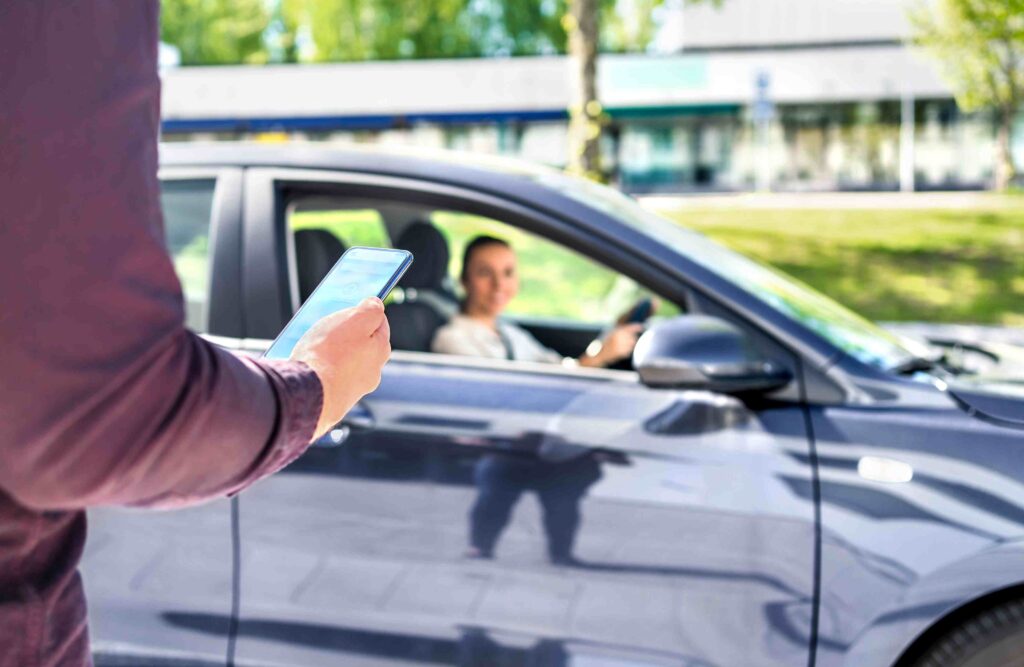
Stay Safe When Using Uber or Other Ride-Sharing Apps
Uber, Lyft, and many other new ride-sharing services have changed how people “catch a cab” these days. They are an easy way to get a quick ride, a great way to make a little extra income, and are continuing to grow in popularity. In cities where these services are available, the use of taxis has decline significantly, as much as 30% in some areas.
However, the convenience of ride-sharing comes with risks. Most businesses like Uber or Lyft are still in their early stages of development, and the popularity, risk management, and compliance issues they are facing are all uncharted territory.
How Do Ride-Sharing Apps Work?
Each ride-sharing service is different in its own way, but all of them operate under the same concept. Almost anyone can be a drive for Uber, Lyft, Zimride, etc., but each one has different minimums for screening and approving drivers and their vehicles.
Passengers can see available drivers nearby, and request a pickup through an app on their smartphone. Most apps provide an estimated time of arrival, along with the name of the driver, the vehicle make and model, and even an image of the person picking you up.
The ride-sharing service typically takes a cut between 20-25% for each ride the driver completes.
While this all sounds easy and convenient for both the driver and the passenger, these services do not come without flaws. It can be hard to determine what regulations or local laws each service and its drivers should be following, what kind of insurance coverage they need, and who would be liable in an accident.
Insurance with Ride-Sharing
As a ride-sharing driver, you can use your own personal vehicle. The ride-sharing services must clarify when exactly drivers are covered by different types of insurance.
If a driver is not accepting rides at that time, his/her personal car insurance is the primary coverage. Once they turn the app on, but have not accepted a ride yet, ride-sharing services generally provide contingent liability coverage if the driver’s own personal insurance would not provide protection. With a passenger in the car, the ride-sharing services’ policy is in full effect until the ride is over.
State Regulations for Ride-Sharing Services
Taxi cabs are regulated on a city-by-city basis. While they follow specific guidelines, ride-sharing services do not have to follow the same strict rules and regulations. However, this is beginning to change as some states are enforcing laws to set standards and insurance requirements for those providing ride-sharing services to the public. Some upcoming court decisions will work toward determining who is liable in various situations.
Risks of Ride-Sharing Drivers
Just because some companies provide liability insurance for their drivers to go along with their personal coverage, this doesn’t mean drivers have insurance coverage for all of their risks.
Drivers can easily be dropped by their insurance company if they engage in commercial activity on a personal auto policy. It’s important for a driver to be honest about how they will be using their covered vehicles. In failure to disclose the use of their vehicle for commercial use (such as a ride-sharing service) the insurer could not only deny claims, but drop the driver from the policy entirely.
See if your policy allows you to switch between personal and commercial coverage.
Risks of Using Ride-Sharing Services As a Passenger
By getting into an Uber, Lyft, or other ride-sharing vehicle, you automatically agree to the terms and conditions associated with it. If the driver gets into an accident and the passenger is hurt, there is no guarantee that the driver’s insurance company or the ride-sharing service will pay for damages.
As a passenger, you may have to take the personal driver to court for damages, which can be costly and time-consuming. On the other hand, if the same situation were to happen in a taxi, you as a passenger can approach the driver directly regarding liability or safety issues.
Safety is always a concern for both drivers and passengers. You want to know who is getting in the backseat of your car, and vice-versa as the passenger wants to know who will be driving the car they are getting into. A passenger only knows how reliable a driver is from the information provided on the mobile app.
Tips For Riding Uber, Lyft, and Others
Overall, ride-sharing is a generally safe process, but it is important to be aware of the risks at hand. Keep the below safety tips in mind the next time you order a pickup!
- Let your friends or family know where you are, where you’re going, and when. Some apps even let you share the route and driver information.
- Before you open the door and get in, check the license plate, make and model of the car, and take a look at the driver. Never just get into a car with a driver that claims they are with a ride-sharing service, even if they have a sticker that appears so. Always order your ride through the secure app, and double check the car picking you up matches the information provided.
- Don’t share unnecessary personal information with your driver.
- Always wear your seat belt! This may seem obvious, but safety first.
- Report any unsafe driving immediately on the ride-sharing app.
As ride-sharing apps are evolving to meet safety needs of drivers and passengers, insurance companies are taking different approaches to claims.
Contact us today at Staples Insurance (410) 546-3999 to discuss your auto insurance coverage, and make sure you are always protected.

